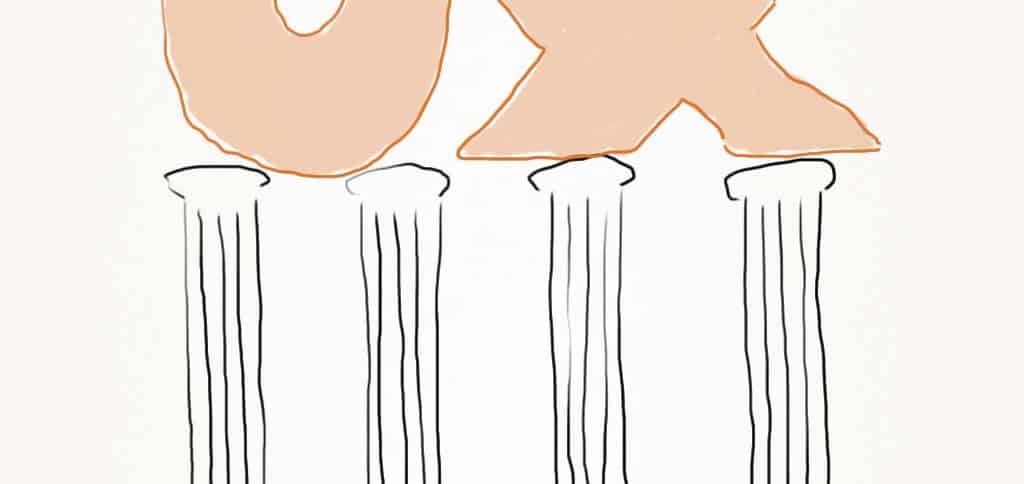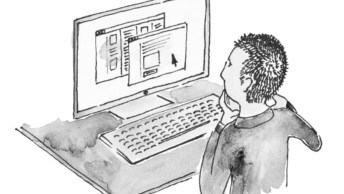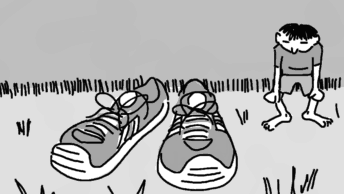I recently wrote about the biggest mistake new UX designers make, and in it reflected on some of the design faux pas I made prior to discovering a more objective, user-centered approach.
Back then, when it first dawned on me that the process I was using to design websites wasn’t what many of the industry thought leaders I admired and respected would refer to as “best practice”, I sought out help. I knew I wanted to learn more about this thing called “user-centered design”, but I didn’t know where to start.
Fast forward to the present day, and I feel like I have a pretty good handle on a range of techniques, and a good understanding of when to apply them. By no means would I count myself as an expert, or suggest that I’ve mastered everything there is to know about UX design. The goal posts in this industry are constantly changing, meaning there is always something new to learn—but I certainly consider myself to be competent and experienced. But this reflection begs the question: what is required for rapid learning? And would would it take to master the techniques required to be a successful UX designer? What is the path to UX Mastery?
I’m going to posit that there are four pillars of UX Mastery. Jared Spool has written previously that he’d identified 5 skills that were common across accomplished UX designers. To complement that list here are the four pillars that I would consider crucial for UX Mastery:
- Theory
There is a wealth of content out there to guide the aspiring student: books, video training, blogs, online magazines and more … there are even some universities that offer courses in Interaction Design. Add it all up and it’s an almost intimidating body of knowledge for a field that is itself considered an umbrella term for a collection of other disciplines. Getting your head around the key elements can be a struggle, but is crucial for laying a solid foundation of learning.
- Hands-on Experience
The techniques required to be a good UX designer are best learned by doing. Card sorting, user testing, drawing wireframes—the more you perform these activities, the better you become at them. Real on-the-job experience, whether paid or volunteer, is always the best way to gain the confidence to apply the theory.
- Tools
The tools of the UX trade, both digital and physical, are indispensable. Luckily, they’re also largely inexpensive: post it notes, whiteboard markers. Digital tools that I rely on heavily are a wireframing tool and a utility for recording user testing sessions. More sophisticated tools such as eye-trackers may be appropriate in larger projects, and online tools like Google’s Content Experiments are useful when performing A/B and multivariate tests of your website copy. Knowing which tools to use when is fundamental to a good outcome.
- Mentorship
I was (and still am) very fortunate to have found a mentor. He is experienced and well-respected as a fellow UX designer, and donates his time to guide me on anything from how best to raise a sensitive topic for discussion with a client, to giving me career advice. Similarly, the support I get from online discussions and attending events such as UX Bookclub all contribute to creating a positive learning environment for myself.
If I look back over that list, it becomes clear that these are actually four pillars for learning anything that is skill-based. It also highlights the fact that any one of them on their own is not enough. These pillars may seem obvious to some, but the realisation that they were the foundation upon which I learned my craft was quite profound, so I thought I’d share.
The next question is “How does one embrace each of these pillars?” But that’s for another post, on another day.
Does this resonate with you? How have you learned to be a UX designer? Share your experiences in the comments!






on your final point i’ve been looking for a mentor for years. perhaps when you are ready to do the same you could be mine?
Hi Andy. I’m definitely open to the idea. I do get a lot out of the fact that my mentor is local so we can meet for a coffee on occasion. But it’s certainly possible for mentoring relationships to function successfully using online communication tools. I’ll email you privately to discuss.
Hi Matthew, thanks for the great article. I will work hard to become a UX designer and improve my English ( i’m from Romania ) and maybe when i’m ready you can be my mentor as well, happy holidays and have a great new year.
Hi Matthew, i am into web site designing and development from India. I want to learn more about UX designs – techniques to designing website sketeches, wireframes mockups. Need your help. Read about you, that you provide online support to the people which is actually a great help for those who want to make their carrer in UX feild. I am one of them :). I Want to make you my mentor.
Hi Sonya
I do my best to help. A good place for you to start might be signing up for our community forums. That way you can ask questions of a bunch of smart UXers, not just me. :)
Matt
Hi Matthew, great article. I am the GM of a small software development company and our head of development (who is also at the moment the current supervisor of our UX/UI designer) is struggling with figuring out how to structure a path or a set of skills that our UX designer should learn in order to advance her career (and for it to traduce in better wage, etc.). Where do you think I could find material that would help him with this?
Hi Alejandro,
If I may step in to answer your query, you may find a few resources on the UX Courses list.
For a more structured learning path, I would recommend the Interaction Design Foundation. Here is a learning path for a UX Designer that might be helpful for your team members.
Hope this helps!